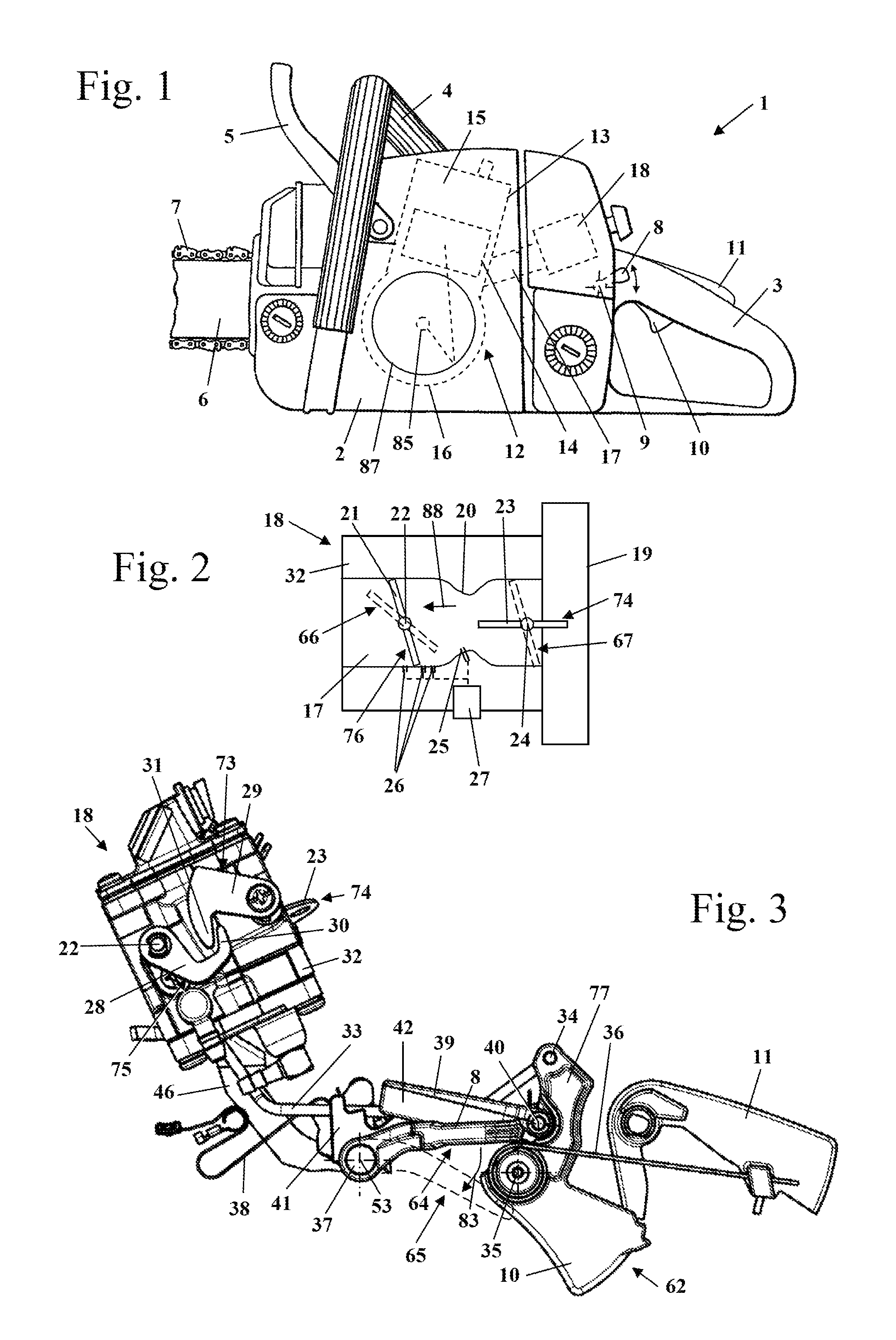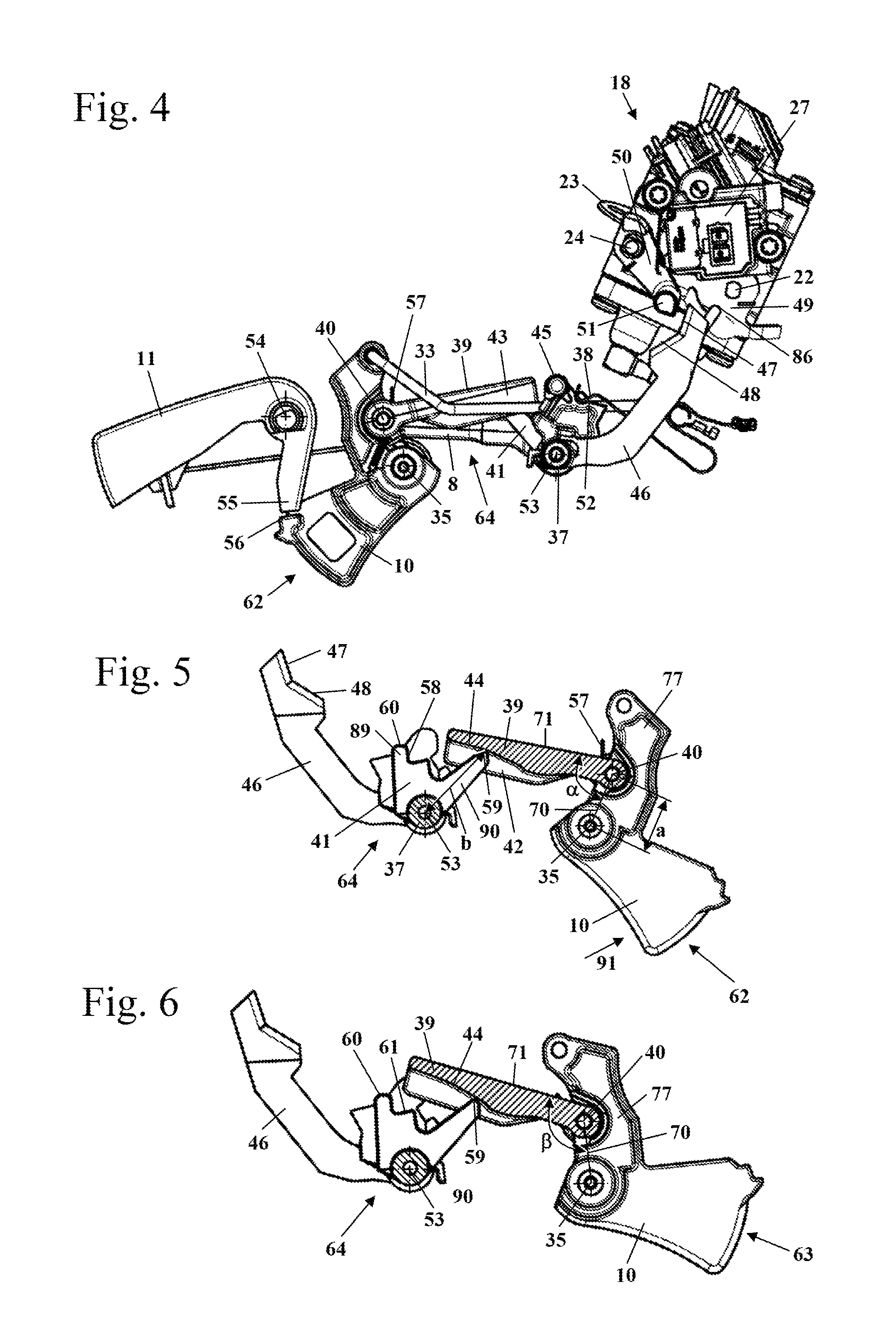Hand-held power tool with an internal combustion engine
a technology of internal combustion engine and power tool, which is applied in the direction of machines/engines, percussive tools portable, charge feed systems, etc., can solve the problem of low weight of power tools, and achieve the effect of simple and robust configuration, favorable introduction, and simple and robust configuration
- Summary
- Abstract
- Description
- Claims
- Application Information
AI Technical Summary
Benefits of technology
Problems solved by technology
Method used
Image
Examples
Embodiment Construction
[0025]FIG. 1 shows a motor chain saw 1 as an embodiment of a hand-held power tool. Instead of the motor chain saw 1, a different type of hand-held power tool can be provided such as a cut-off machine, a trimmer, a suction / blowing device, a hedge trimmer, a harvesting device, or the like. The motor chain saw 1 has a housing 2 on which a rear handle 3 and a front handle (grip tube) 4 for guiding the motor chain saw 1 in operation are secured. On the side of the housing 2 which is opposite the rear handle 3, a guidebar 6 projects forwardly on which a saw chain 7 is arranged so as to circulate about the guidebar 6. On the housing 2, a hand guard 5 is arranged which is positioned on the side of the front handle 4 which is facing the saw chain 7. The hand guard 5 can be pivotably supported on the housing 2 and can serve for triggering a chain brake for the saw chain 7.
[0026]The saw chain 7 is driven in circulation by an internal combustion engine 12 arranged within the housing 2. The inte...
PUM
 Login to View More
Login to View More Abstract
Description
Claims
Application Information
 Login to View More
Login to View More - R&D
- Intellectual Property
- Life Sciences
- Materials
- Tech Scout
- Unparalleled Data Quality
- Higher Quality Content
- 60% Fewer Hallucinations
Browse by: Latest US Patents, China's latest patents, Technical Efficacy Thesaurus, Application Domain, Technology Topic, Popular Technical Reports.
© 2025 PatSnap. All rights reserved.Legal|Privacy policy|Modern Slavery Act Transparency Statement|Sitemap|About US| Contact US: help@patsnap.com



